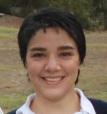Hijacker parasite blocked from infiltrating blood
International collaboration uses Australian Synchrotron on pioneering malaria research.

Showing 261 - 280 of 368 results
International collaboration uses Australian Synchrotron on pioneering malaria research.
New research published in the journal Nature Nanotechnology shows that the next generation of lithium-sulphur (Li||S) batteries may be capable of being charged in less than five minutes, instead of several hours as is currently the case.
Researchers have discovered a 380-million-year-old heart – the oldest ever found – alongside a separate fossilised stomach, intestine and liver in an ancient jawed fish, shedding new light on the evolution of our own bodies.
Australia part of global renaissance in fusion power research symbolised by ITER experiment


ANSTO has a range of capabilities and expertise to support aerospace and space research.
Macromolecular crystallography helps determine the atomic structure.

Meeting of minds about potential next-generation cancer treatment for Australians

Dr Anna Paradowska has been appointed as a Conjoint Professor of Practice in Advanced Structural Materials at the University of Sydney.
High intensity X-ray beam provides insights into the activity of natural killer cells.

ANSTO has hosted an event to launch a new Dharawal language learning resource for primary students at the nandin innovation centre.

The mining industry is set to benefit from a new Australian capability that uses a nuclear scanning technique to detect the presence of precious metals and strategic minerals in a core sample.
Frequently Asked Questions on the Macromolecular Crystallography beamlines (MX1 and MX2)
Research represents significant step towards developing vaccine

The Australian Synchrotron has an on-site Guesthouse for users and AS guests.